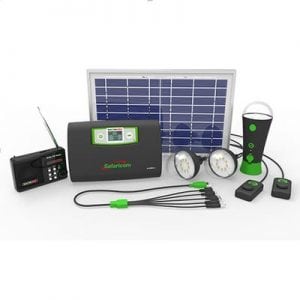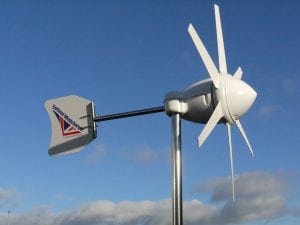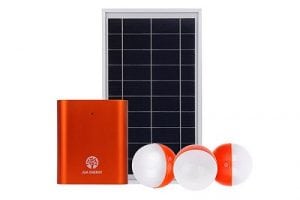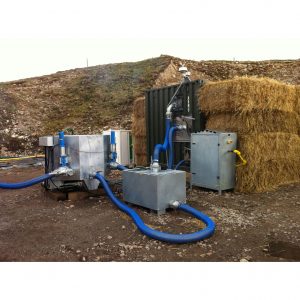
Agriculture
December 18, 2024
Breezergy Micro Wind Turbine
Read SolutionImplemented by
SkyWind Energy GmbH

Updated on December 17, 2024
·Created on May 23, 2016
The Nopalimex is a biodigester powered by a cactus (nopal) widely found in Mexico.
Nopalimex is a biodigester developed by Miguel Aké entirely powered by nopal, a cactus. The plant benefits from economies of scale and low transport cost, as the crop is grown around the biodigester plant. The biogas produced is used in the factory for making corn and cactus chips, as well as in a gen-set for electricity. Some is cleaned of carbon dioxide and provided as bio-methane, which can be used in modified vehicles.
Target SDGs
SDG 7: Affordable and Clean Energy
SDG 8: Decent Work and Economic Growth
Market Suggested Retail Price
$2,170,000.00
Target Users (Target Impact Group)
Small and Medium-sized Enterprises, Public Sector Agencies
Distributors / Implementing Organizations
Nopalimex is the sole distributor in Mexico. This firm generates gas and electricity using nopal biomass.
Competitive Landscape
Direct competitors include G2E Biomass Gasification Plant.
Countries
Brazil, Chile, Colombia, Ecuador, India, Mexico
Manufacturing/Building Method
Plants are designed and custom-built individually. Nopal plantation is liquefied by a special machine. The resulting pulp is mixed in large tanks with water at 38 degrees C which is the required temperature to break down nopal and release methane. Further treatment with sulphuric acid extracts carbon dioxide, giving the plant a 96% concentration of methane at a production rate of eight tons a day.
Intellectural Property Type
Patent
User Provision Model
Users can obtain the product directly from Nopalimex.
Distributions to Date Status
Two plants to date in the town of Zitacuaro, in central Michoacan state, the first to aliment the company 'El Manjar del Campo' that produces tortillas, the second used to fuel the town's vehicle fleet.
Output energy product
Unknown
Average daily biogas production (m3/day)
600 m3/day – 800 m3/day
Description of waste source(s)
Dried cactus (nopal) leaves
Waste input requirements (kg per hour or day)
7,257 kg of per day
Description of other input requirements
Unknown
Other input requirements (amount per hour)
Unknown
System dimensions (m)
Unknown
Design Specifications
The system includes a well-insulated above-ground container. The biogas digester processes prickly pears (from the cactus) into biomethane. The pears are ground up into a soup, mixed with manure and fermented in a digester. The biogas generated is then cooled to dewater it.
Technical Support
May be provided by the manufacturer
Replacement Components
N/A
Lifecycle
Unknown
Manufacturer Specified Performance Parameters
To convert nopal leaves into a source of usable energy.
Vetted Performance Status
Research was conducted by scientists in Oxford University on the prickly pear cacti and they found that the plant can help produce more food in drought-stricken areas. Since the cacti absorbs high quantities of water, after digestion biogas is made, liquid and solid fertilizer will be left over. This in turn is used to better cultivate crops in areas that could not otherwise support them.
Safety
There are some dangers associated with biogas, including fire hazard, explosion, gas leaks, and negative pressure.
Complementary Technical Systems
None
Academic Research and References
Aké, M., 2017, Biogás con nopal para vehículos en sustitución de combustibles fósiles, México.
Advanced Biofuels USA. 2017. Methane Plant Is the First to Use Nopal. Mexico News Daily, March 22, 2017.
Instituto Mexicano de La Propiedad Industrial | Gobierno | Gob.mx. n.d. www.gob.mx.
World’s First Cactus Biogas Plant Opens in Mexico. 2016. Yucatan Times.
Mason, P.M., Glover, K., Smith, J.A.C., Willis, K.J., Woods, J., Thomson, I.P., 2015, The potential of CAM crops as a globally significantbioenergy resource: moving from ‘fuel or food’ to fuel and more food. Energy & Environmental Science. Vol 8. Issue 8. pp 2320-2329.
Compliance with regulations
None
Evaluation methods
Unknown
Other Information
The biodigestor was developed with expert advice from the National Polytechnic Institute of Mexico, the Autonomous University of Chapingo and the Electric Power Research Institute. Expert advisors have indicated that the good economics depend on having a good quality feed material easily accessible - in this case nopal (prickly pear).

Agriculture
December 18, 2024
Implemented by
SkyWind Energy GmbH

Agriculture
June 23, 2024
Implemented by
Kiira Motors Corporation

Agriculture
December 9, 2024
Implemented by
M-KOPA

Agriculture
December 18, 2024
Implemented by
Marlec Engineering Company Ltd.

Agriculture
January 13, 2024
Implemented by
Simpa Networks

Agriculture
December 11, 2024
Implemented by
Amped Innovation PBC

Agriculture
December 7, 2024
Implemented by
Jua Energy Co. Ltd.

Agriculture
June 27, 2024
Implemented by
Bodawerk International Ltd

Agriculture
December 23, 2024
Implemented by
QUBE Renewables Ltd.

Agriculture
December 23, 2024
Implemented by
Amped Innovation PBC
Have thoughts on how we can improve?
Give Us Feedback
Nopalimex is a biogas digester that processes prickly pears into
biomethane. The pears are ground up into a soup, mixed with manure and
fermented in a digester. The biogas generated is then cooled to dewater it. The gas is also used in the factory for making corn and cactus
chips, as well as in a genset for electricity. Some is cleaned of carbon
dioxide and provided as biomethane, which can be used in modified
vehicles.
It is not clear what the biogas digester is made from, but the picture shows a well insulated above ground container, so it is probably made from steel. The plant benefits from economies of scale and also no transport cost, as the crop is grown around it.
The Nopalimex plant wortks well on the site for which it was made. There are minimal transport costs and economies of scale. They claim an electrcity cost less than half of that supplied by the electrcity grid.
It is not clear how many other sites would be suitable. The feed material, prickly pear, is very productive and locally available. There are probably several sites in Mexico that would be suitable.
It is a bespoke design, made individually for customers and their particular sites.
The plant seems to be very effective, using the particular feed material that is easily available (prickly pear – nopal). It uses a “standard” approach, of crushing the feed material, mixing it with dung and putting it in a steel tank CSTR. The good economics depend on having a good quality feed material easily accessible.